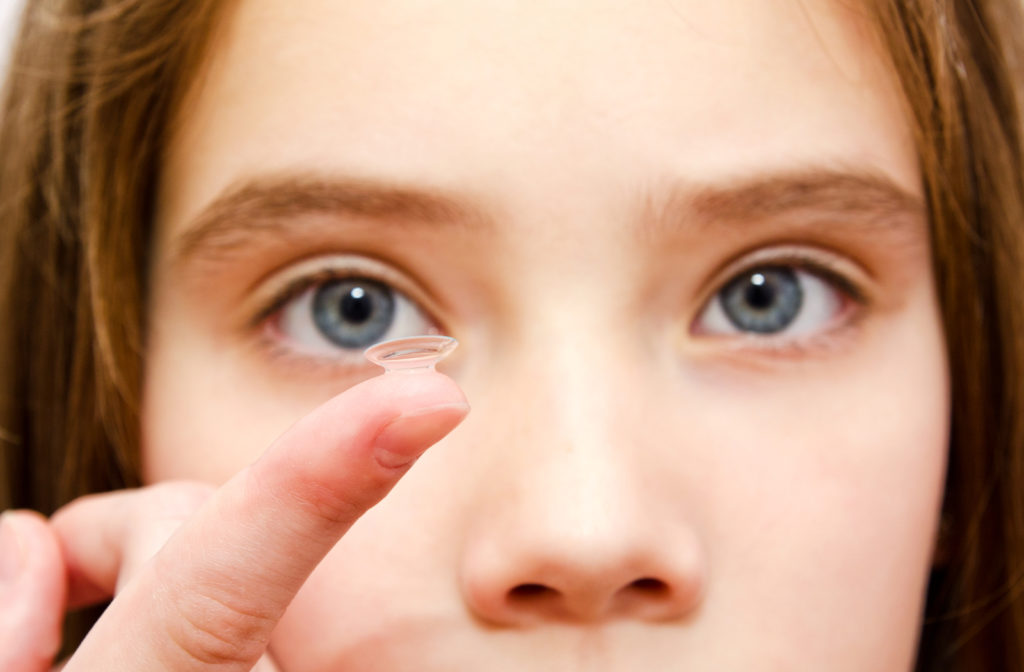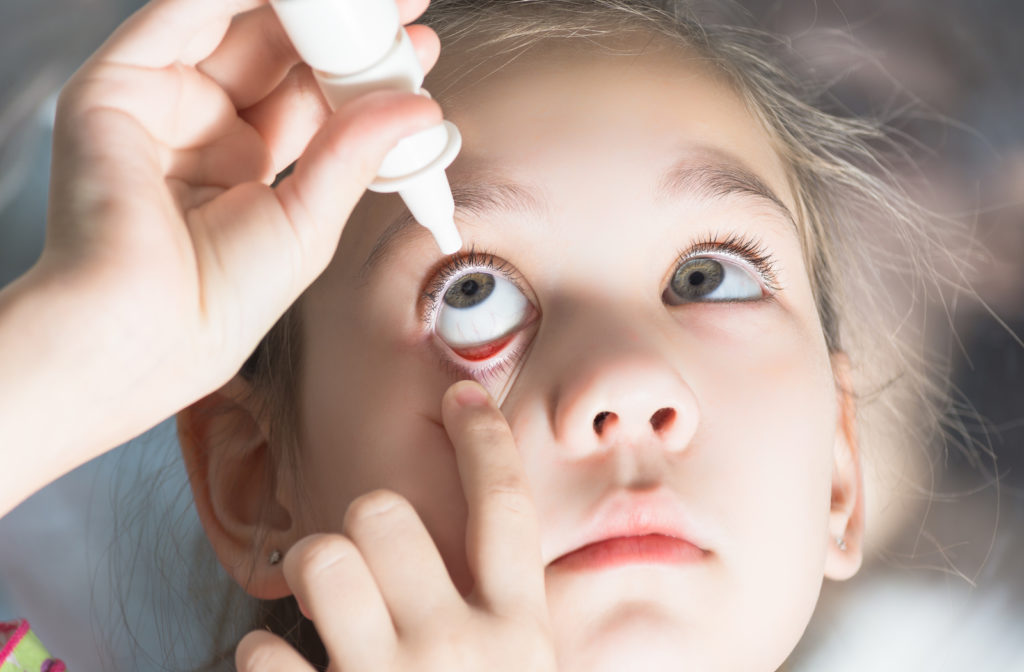Myopia is a common refractive error that can worsen with time, increasing your child’s risk of eye disease. You can protect your child’s vision and eye health with help from your eye doctor, but what should you expect from myopia treatments?
Continue reading to learn more about myopia management, including what to expect and what treatments are available.
What Is Myopia?
Did you know over 30% of Canadians have myopia?
Myopia is a common refractive error where someone has blurry vision from far distances, but close-up objects appear clearly. Light entering the eye doesn’t bend properly, causing it to focus in front of your retina.
Myopia typically develops in childhood, where it progresses until early adulthood. In rare cases, myopia may continue to progress in adulthood.
Your child may have several signs they’re experiencing vision problems. However, children may assume everyone sees as they do, so watch for signs of myopia in your child, such as:
- Squinting excessively
- Having headaches
- Having strained eyes
- Blinking persistently
- Seeming unaware of far-away objects
- Rubbing their eyes frequently
- Sitting close to digital screens or in the front of the classroom
How Does Myopia Develop?
Someone with myopia has differently shaped eyes than someone without a refractive error. Myopic eyes are typically too long or have a steep curvature, causing light to bend incorrectly as it enters the eye.
Besides eye shape, other factors may contribute to myopia, including:
The eyes continue to grow as your child does, which can cause myopia to worsen with time.
High Myopia
Myopia can worsen as your child grows, causing them to need heavier prescriptions as an adult. When myopia progresses into a more severe form, it becomes high myopia.
High myopia increases your child’s risk of significant eye diseases in adulthood, including:
Myopia can progress significantly as your child grows. However, specialized treatments can help slow or prevent myopic progression.
What Is Myopia Management & What Should You Expect?
While there is no cure for myopia, your eye doctor can help control its progression. Myopia control focuses on slowing eyeball growth to prevent this condition from worsening. Standard single-vision glasses can only help your child see better, so other treatments are necessary to help control myopic progression.
Many myopia control treatments are easy to adapt to, coming in contact lenses, glasses, or eye drops. Your optometrist can recommend the best treatment for your child’s vision needs.
Myopia Control Treatments
There is no wrong choice when choosing a myopia control treatment for your child. Your eye doctor will provide their recommendations on the most effective options for your child.
Myopia control treatments include specialized eyewear, contact lenses, atropine drops, and environmental changes.
Specialized Eyewear
Several types of specialized eyewear exist for controlling myopic progression. A common treatment option is the use of MyoVision glasses.
MyoVision lenses help correct and control myopia, helping your child see better while slowing eyeball growth. They utilize peripheral defocus to help peripheral light focus on the retina instead of behind it. Changing how this light focuses slows eyeball growth because the eye isn’t trying to accommodate peripheral light entering the eye.
Contact Lenses
Different contacts ranging from soft to rigid gas permeable lenses can help correct and control myopic progression. These lenses include multifocal contacts, MiSight contact lenses, and orthokeratology (ortho-k) lenses.
Multifocal contact lenses contain multiple prescriptions in the same lens, providing clear vision from multiple distances. The centre of the lens can help correct vision, while the outer rings of the lens help focus peripheral light rays, slowing down eye growth.
MiSight contact lenses help manage myopic progression with their unique design. They’re daily disposable lenses your child replaces every day, making them easy to get used to.
A centre zone helps correct your child’s vision while alternating rings surround the lens centre to help slow myopia progression. These lenses help slow eyeball growth—a 3-year study found these lenses reduce myopic progression by up to 59%.
Orthokeratology (ortho-k) contact lenses are reshaping lenses your child wears overnight. These rigid contacts gently shape the cornea as your child sleeps, helping them see clearly the next day without the need for glasses or contacts. Additionally, these lenses help slow myopic progression.
Atropine Drops
Low-dose atropine eye drops can help slow myopic progression by almost 50%. It works by interacting with the eye’s receptors that control eye growth in different tissues.
Many doses of atropine exist, but the most commonly used doses for myopia control are 0.05% to 0.01%. These doses minimize the risk of side effects while helping slow myopic progression.
Environmental Changes
Your child’s lifestyle can affect myopia. Children who spend more time outside can reduce myopic progression. Aim to have your child spend a couple of hours outside every day.
Another possible cause of myopia is time spent on digital devices. The amount of time your child spends using these devices may affect myopic progression. Speaking with your eye doctor about your child’s digital device usage can help.

Help Protect Your Child’s Vision
Myopia can seem insignificant at first, but it can significantly affect your child’s vision and eye health. Without proper treatment, your child risks a prescription-heavy future and an increased risk of eye disease. You can protect your child’s vision with help from your eye doctor.
Contact River Heights Eye Care if your child has symptoms of myopia.


